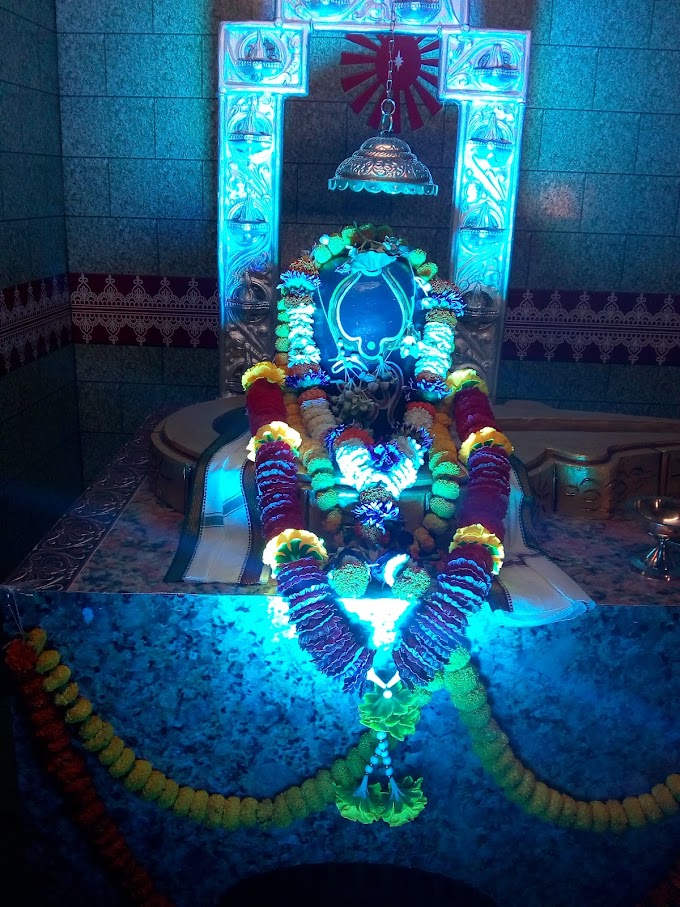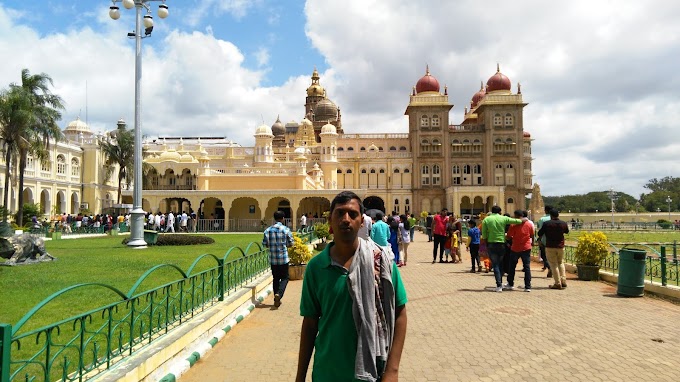One island in Chilika Lake
AREA COVER BY LAKE
Chilika Lake is a big salty lake in South Asia and second largest salty water lake in world. It is made by nature and it is connected with the Bey of Bengal at Satapada. This lake is touched to Puri, Khurda and Ganjam district of Orissa. It is covered by some tourist place like Satapada, Barkul, Nala Bana etc. Chilika lake is covered approximately 1150 Sq. Km of area. The north shore of the lake is part of Khordha District and the western shore is part of Ganjam District and on the northeast side, the channel connects to Bay of Bengal.
Middle of Chilika Lake at evening time
Entrance of NALABANA
Chilika was selected the first Indian wetland of International importance under Ramsar convention in the year 1981. There are 170 nations in the list of Ramsar Convention and India is one of them. Therefore the name of Chilika was suggested.
Nalaban Island is within the lake of chilika which is covered 15 Sq. Km and is the core area of the Ramsar designated wetlands. It was declared a bird sanctuary by the Indian Government under the Wildlife Protection Act in 1973. It is the heart of the park where one can see thousand of thousands birds downward during the migratory season mainly Winter Season. Many Indian and non-Indian visitors are coming to this place only of birds. The island disappears during monsoon season due to heavy rain, and during post-monsoon again the island appears.
PAST HISTORY OF LAKE
This lake is standing so many years no one know but the Archaeological Survey Department, says that the age of the lake is three thousand years. The past history of the lake was that it was covered a major part of south Mahanadi delta but present day its size become squeeze.
Kalijaei Temple in Chilika lake
The width of the barrier has fluctuated and the mouth to the sea has periodically been closed. The location of the mouth has also frequently shifted, generally towards the northeast. The changes are occurred due to natural calamity. The mouth, which was 1.5 km (0.9 mi) wide in 1780, was only .75 km (0.5 mi) forty years later.
In 2002, Chilika was taken out of the Montreux Record, in light of the improved conditions of the lake. Chilika lake is the first Ramsar site in Asia to be removed from the Montreux record.
SOURCE OF LOCAL PEOPLE INCOME
Big Crab i ever seen
The local people are maintained their lively hood by catching the fishermen from this lake and other source of income is for tourist. Butter catfish and Wallago attu, species of fish, 5 species of prawn and 2 crab species are the most common type of fish found in this lake. The fish are commercially important and they export the said fish all over India. The commercially important prawn are giant tiger prawn, Indian prawn (Penaeus indicus), Metapenaeus monoceros (Speckled shrimp), Metapenaeus affinis (Pink prawn) and Metapenaeus dobson (Kadal shrimp). Mangrove crab is the most important commercial crab.
The open air and scenic natural flora and fauna of the lake are an attraction for eco-tourism. This is expected to provide a degree of alternate employment to the local community and generate environmental awareness, among local residents as well as visitors, about the conservation and wise use of the lake's natural resources. The locations within the lake identified for such activity are:
TOURIST
This lake also very attractive and attract the tourist. Very day thousands of tourist are coming all over world. It is also a source of income for their local people. The following are the main attractive place
1) Kalijai Temple
2) Nalabana Island (Nalabana Bird Sanctuary)
3) Satapada.
4) Rambha Bay.
5) Breakfast Island.
6) Honeymoon Island.
7) Birds' Island.
8) Rajhans Island
Orissa Government also provide some facility to the tourist in name of Odisha Tourism Development Corporation (OTDC). There are OTDC Guest houses at Barkul, Rambha, Satapada & several hotels at Balugaon. Before entering into the Nalbana Bird Sanctuary one has to obtain an entry pass. The entry pass has to be produced at entry or exit points and at check gates as and whenever requested by officials.
The lagoon hosts over 160 species of birds in the peak migratory season. Birds from as far as the Caspian Sea, Lake Baikal, Aral Sea and other remote parts of Russia, Kirghiz steppes of Kazakhstan, Central and southeast Asia, Ladakh and Himalayas come here. These birds travel great distances; migratory birds probably follow much longer routes than the straight lines, possibly up to 12,000 km, to reach Chilika Lake.
The vast lake harbours 225 species of fish, a wide variety of phytoplankton, algae and aquatic plants, and also supports over 350 species of non-aquatic plants. The other areas where high concentrations of birds are recorded are Gerasara, Parikud Island, and the western shores of the Northern sector.
Migratory birds fowl arrive here from as far as the Caspian Sea, Baikal Lake and remote parts of Russia, Mongolia, Lakah, Siberia, Iran, Iraq, Afghanistan and from the Himalayas. A census conducted in the winter of 1997-98 recorded about 2 million birds in the lake.
The lake has numerous islands. The larger islands, separated by thin channels, lie between the barrier and the main body of the lake. A total 42 Sq. Km (16 sq mi) of channels connect the lake with Bay of Bengal.
Achievement by Archeological department
Archeological excavations discovered seventh-century ship anchors and stone memoirs dedicated to battle heroes at a village named Kanas, about 25 km (16 mi) north of Chilika on the banks of Nuna river, which flows into the lake. This gives evidence of a historic naval engagement off the coast. In this lake many ancient story are involved but that does not reveal till yet
The history book says that in 639, the Chinese pilgrims Fa-Hien and Hiuen-Tsang mention a famous port "Che-li-ta-loChing" near the shore of the ocean which was a thoroughfare and resting place for seagoing traders and strangers from distant lands. This port was located at 'Chhatragarh' on the banks of Chilika Lake.
Several inland rivers, which bring silt into the lake, control the northern end of the lake. A 60 km (37 mi) long barrier beach called Rejhansa,[24] formed by northerly currents in the Bay of Bengal, resulted in the formation of this shallow lake and forms its eastern side. As an ephemeral lake, its water surface area varies from 1,165 km2 (449.8 sq mi) in the summer monsoon season to 906 km2 (349.8 sq mi) in the winter dry season.
The catchment area of Chilika lake has a rock, sand and mud substratum. It contains a wide range of sedimentary particles such as clay, silt, sand, gravel and shell banks but the major part of the catchment area is silt. Around 1.6 million metric tons per year of sediment is deposited in Chilika lake by rivers Daya and several streams




















